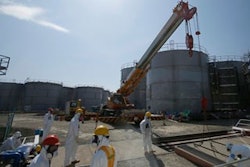Explore the most common areas of increased profitability and safety when implementing a vacuum conveying system for the transport of bulk dry materials. Check out Part I here.
Back Injury
In the manufacturing arena, four out of five materials handling injuries affect the back and require a median of ten days for workers to recuperate. Using the $afety Pays worksheet, calculating with a five percent profit margin, a strain has indirect costs in excess of $33,000 and requires an additional $672,122 in sales to recoup those costs. Anytime organizations can eliminate the possibility of back injuries, injury costs should be taken into consideration when determining ROI.
While working on a major efficiency project that culminated in the building of new rooms for a blending area, a tea manufacturer wanted to also cut down the amount of lifting that the operators were doing manually in the production department.
Previously, the operators were manually weighing individual hundred-pound batches into barrels, using forklifts to transfer them to the top level, and then dumping them into hoppers by hand.
One of the biggest concerns for the tea manufacturer was the breakdown of the materials themselves. Pneumatic conveying is a very gentle way to move product and once that was proven to the manufacturer in the VAC-U-MAX testing facility; the system was designed to automate the process.
Now rather than operators using forklifts to bring barrels up to the mezzanine level, and manually scooping materials into the hopper, operators insert a wand into the barrels and product is pneumatically transferred from the wand to the blenders, eliminating all the forklift traffic and wear and tear of the workers’ backs.
In addition to eliminating ergonomic issues and potential costs associated with injury, the company had a 20 percent increase in productivity.
[Continue Reading...]























